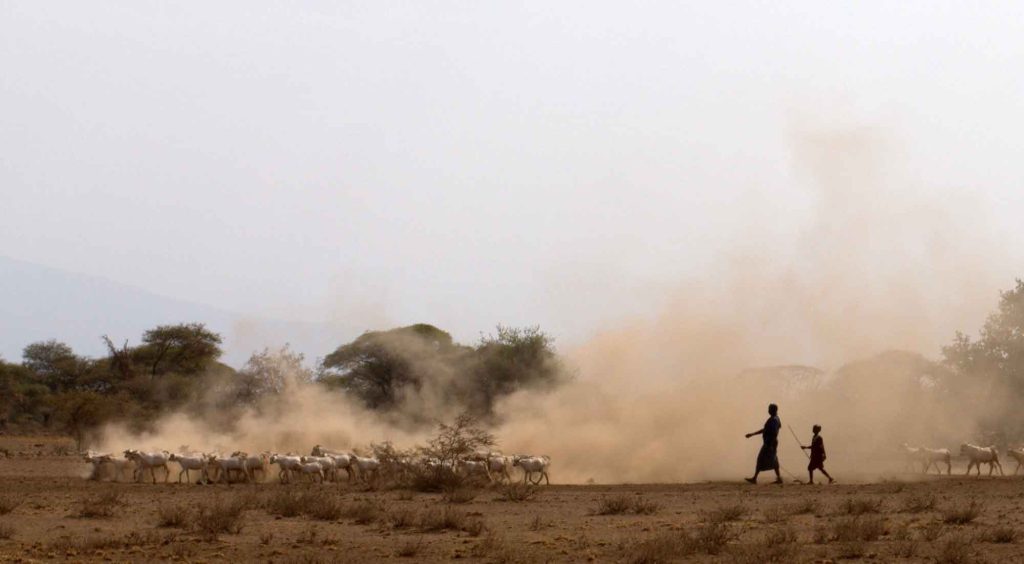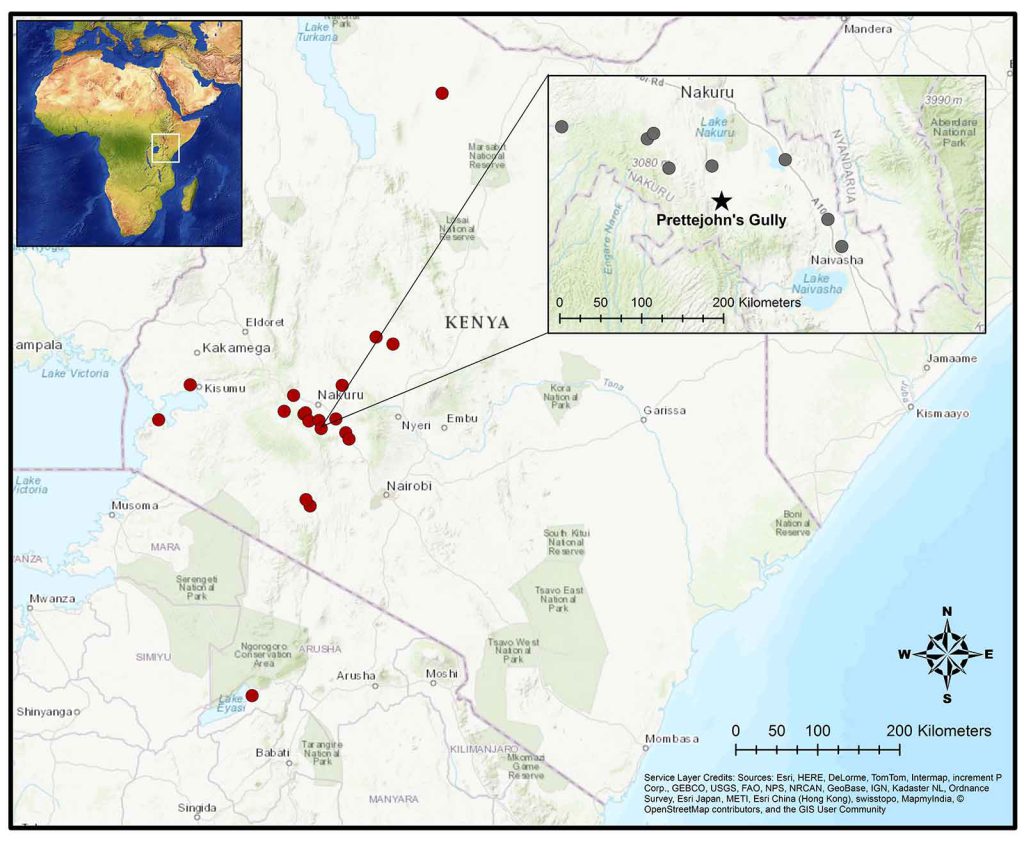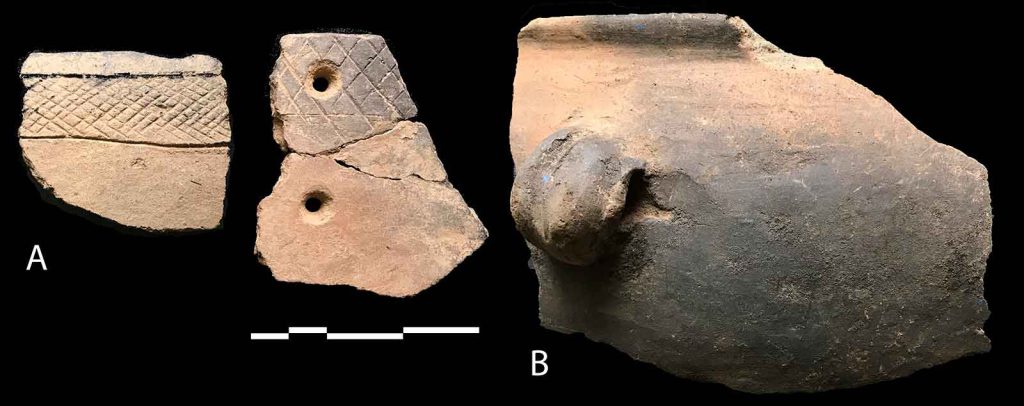Ancient DNA Illuminates Pastoralism’s Rise in Africa

This article was originally published at The Conversation and has been republished under Creative Commons.
Visitors to East Africa are often amazed by massive herds of cattle with a gorgeous array of horn, hump, and coat patterns. Pastoralism—a way of life centered around herding—is a central part of many Africans’ identity. It’s also a key economic strategy that is now threatened by climate change, rising demands for meat, urban sprawl, and land conflicts.
Pastoralism’s roots could hold clues to help solve these modern challenges. Studies suggest that traditional ways of managing livestock—moving around and exchanging with other herders—enabled herders to cope with environmental instability and economic change over the past several thousand years. Research is also helping scientists understand how millennia of herding—and livestock dung—have shaped East Africa’s savannas and wildlife diversity.
So how did pastoralism get started in Africa? Currently most archaeologists think wild ancestors of today’s domestic cattle, sheep, and goats were first domesticated in the “Fertile Crescent” of the Middle East. Archaeological research shows herding began to appear in and spread from what is now Egypt around 8,000 years ago. By 5,000 years ago, herders were burying their dead in elaborate monumental cemeteries near a lakeshore in Kenya. Two millennia later, pastoralist settlements were present across a wide part of East Africa, and by at least 2,000 years ago, livestock appear in South Africa.
Much remains unanswered: Did animals spread mostly through exchange, just like cash circulates widely while people mostly stay put? Were people moving long distances with their herds, traversing the continent generation by generation? Were there many separate migrations or few, and what happened when immigrant herders met Indigenous foragers? We decided to ask these questions using ancient DNA from archaeological skeletons from across East Africa.
Piecing together the genetic history of herders
Archaeologists study ancient people’s trash—broken clay pots, abandoned jewelry, leftover meals, even feces—but we also study the people themselves. Bioarchaeologists examine human bones and teeth as indicators of health, lifestyle, and identity.
Now it’s also possible to sequence ancient DNA to look at genetic ancestry. Until recently, though, Africa has been on the sidelines of the “ancient DNA revolution” for a variety of reasons. Advances in DNA sequencing have created new opportunities to study African population history.
In our new research, our team sequenced the genomes of 41 people buried at archaeological sites in Kenya and Tanzania, more than doubling the number of ancient individuals with genome-wide data from sub-Saharan Africa. We obtained radiocarbon dates from the bones of 35 of these people—important because direct dates on human remains are virtually nonexistent in East Africa. Working as a team meant forging partnerships among curators, archaeologists, and geneticists, despite our different work cultures and specialized vocabularies.
The people we studied were buried with a wide variety of archaeological evidence linking them to foraging, pastoralism, and, in one case, farming. These associations are not airtight—people may have shifted between foraging and herding—but we rely on cultural traditions, artifact types, and food remains to try to understand how people were getting their meals.
After we grouped individuals based on the lifestyles we inferred from associated archaeological evidence, we compared their ancient genomes to those of hundreds of living people and a few dozen ancient people from across Africa and the adjacent Middle East. We were looking for patterns of genetic relatedness.
Some of our ancient samples did not resemble other known groups. Despite major efforts to document the vast genetic variation in Africa, there’s a long way to go. There are still gaps in modern data and no ancient data at all for much of the continent. Although we can identify groups that share genetic similarities with the ancient herders, this picture no doubt will become clearer as more data become available.
Herding expanded in stages
So far we can tell that herding spread via a complex, multistep process. The first step involved a “ghost population”—one for which we don’t have direct genetic evidence yet. These people drew about half of their ancestry from groups who lived in either the Middle East or presumably northeastern Africa (a region for which we have no relevant aDNA) or both, and about half from Sudanese groups. As this group spread southward—likely with livestock—they interacted and genetically integrated with foragers already living in East Africa. This period of interaction lasted from perhaps around 4,500 to 3,500 years ago.
Archaeologists have a saying that “pots are not people.”
After this occurred, it appears that ancient herders genetically kept to themselves. Methods that let us estimate the average date of admixture—that is, gene flow between previously isolated groups—indicate integration largely stopped by around 3,500 years ago. This suggests there were social barriers that kept herders and foragers from having children together, even if they interacted in plenty of other ways. Alternatively, there may have been far fewer foragers than herders so that gene flow among these communities didn’t have a big demographic impact.
By around 1,200 years ago, we document new arrivals of people related to recent Sudanese and—for the first time—West African groups, associated with early iron-working and farming. After this point, a social mosaic made up of farmers, herders, and foragers became typical of East Africa, and remains so today.
One interesting question is how early pastoralists used their herds. For instance, were they drinking milk? Although many East Africans today carry a genetic mutation that helps them digest milk into adulthood, this may be a recent development. We were able to test eight individuals for the genetic variant responsible for lactase persistence in many East African pastoralists today. Just one man, who lived in Tanzania 2,000 years ago, carried this variant. Maybe dairying was rare, but it’s also possible people found creative culinary solutions—for example, fermented milk or yogurt—to avoid indigestion.
Cultural and biological diversity are not the same
Archaeologists have a saying that “pots are not people.” Particular artifact styles are not assumed to reflect concrete identities—just as we wouldn’t assume today that the choice of kilts versus lederhosen is determined by DNA.
In Kenya and Tanzania, archaeologists had previously identified two early herder cultural traditions—the Elmenteitan and the Savanna Pastoral Neolithic—distinguished by different pottery styles, stone tool sources, settlement patterns, and burial practices. The people who created these cultures lived at roughly the same time and in the same area. Some scholars hypothesized that they spoke different languages and had different “ethnic” identities.
Our recent study found no evidence for genetic differentiation among people associated with these different cultures; in fact, we were struck by how closely related they were. Now archaeologists can ask a different question: Why did distinct cultures emerge among such closely related neighbors?
(Re)discovering lost places and people
Some of our most exciting findings came from unexpected places. Museum shelves are full of potentially game-changing collections that have yet to be studied or published. In a back corner of one storeroom, we found a tray containing two fragmentary human skeletons uncovered during a Rift Valley geological expedition at Prettejohn’s Gully in the 1960s. There was little contextual information, but with encouragement from curators, we sampled the remains to see if we could at least determine their age.
We were shocked to learn that these 4,000-year-old burials provided the oldest DNA from Kenya and that the man and woman buried at that site may have been some of the earliest herders in East Africa. Thanks to them, we can show that the spread of herding in Kenya involved several separate movements of ancestrally distinct groups. We have much to learn from older collections, and archaeologists don’t always need to dig to make new discoveries.
Ancient DNA research doesn’t just answer questions about our shared past. It also raises new ones that must be answered by other fields. Our results don’t tell us what migration and admixture mean in social terms. What prompted people to move with livestock? What happened when people with radically different lifestyles met? What became of the foragers who were living across East Africa throughout the past and whose descendants are few and far between today?
Ultimately, we hope that by studying pastoralism in the past—and demonstrating the resilience of this way of life—we can contribute in some way to understanding the challenges facing herders today.




























